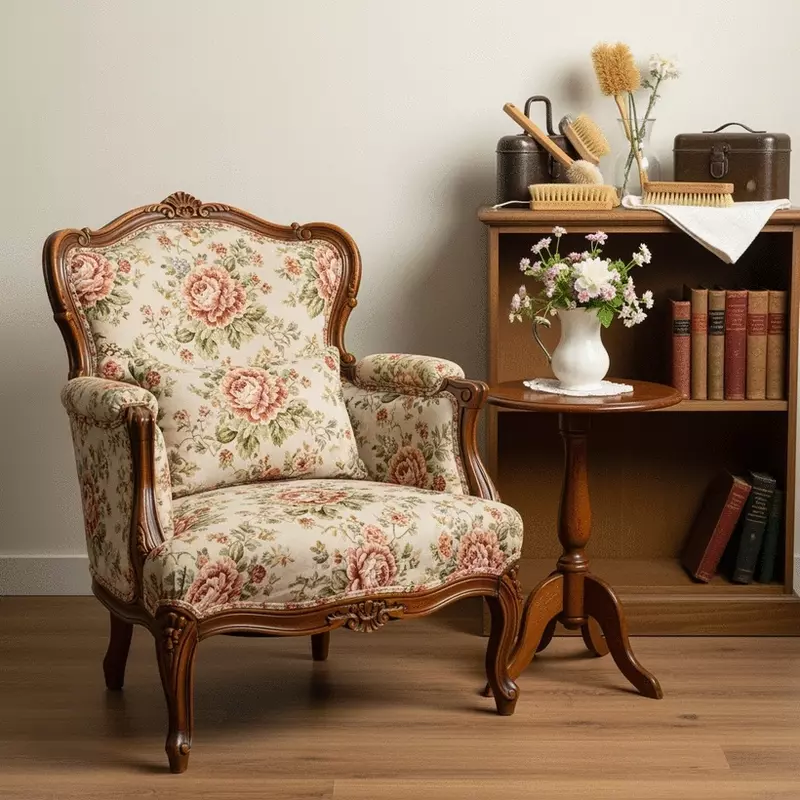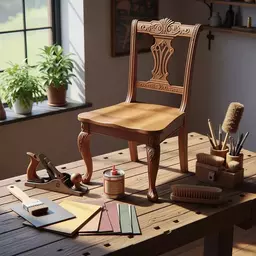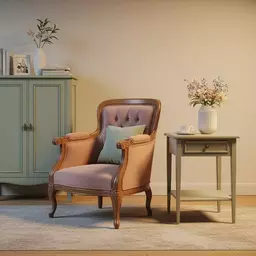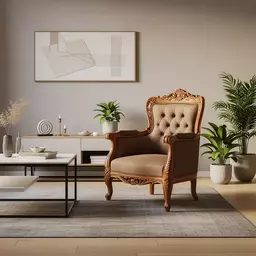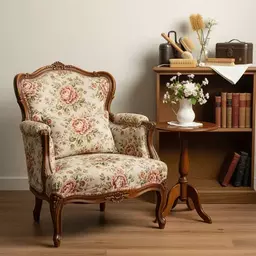Enhancing Antique Furniture with Color

Did you know that the right color can elevate the beauty of antique furniture and transform your entire space? Understanding the significance of color schemes is essential for creating inviting and sophisticated interiors that honor both the past and present.
What You Will Learn
- Color schemes create cohesion, tying together different furniture styles and decor elements.
- Colors can enhance and highlight intricate features of antique pieces, making them focal points.
- The historical context of an antique piece can guide your choice of complementary colors for modern interiors.
- Layering colors and textures adds depth, allowing your antique furniture to shine in your decor.
- Your color choices should reflect your personal style while respecting the character of your antiques.
- Seasonal color changes can refresh antique interiors and keep your decor feeling vibrant and up-to-date.
Impact of Color Schemes on Antique Furniture Perception
Color selection can dramatically influence the perception of antique furniture. Below are key aspects that are essential in selecting effective color schemes.
Creates Cohesion
A consistent color scheme ties together different furniture styles and decor elements, enhancing the overall aesthetic.
Enhances Features
Colors can highlight intricate carvings and unique textures of antique pieces, making them stand out in any decor.
Reflects Personality
Your choice of colors can express your personal style and tastes, making the space truly yours.
Highlighting Contrasts
Use bold colors against muted tones for a striking visual impact and to create depth in the design.
Understanding the Role of Color Schemes in Enhancing Antique Furniture
When it comes to decorating with antique furniture, color schemes play a crucial role in how we perceive and appreciate these timeless pieces. A well-selected palette not only enhances the furniture itself but also creates a harmonious atmosphere in your home. I’ve found that the right colors can transform a room and tell a story, melding the old with the new in ways that feel cohesive and inviting.
Think about how color influences emotions and sets the tone of a space. For instance, warm tones can evoke feelings of comfort and nostalgia, while cooler shades might lend a sense of calm and tranquility. It’s fascinating to see how incorporating the right colors can emphasize the beauty of a cherished antique, making it a focal point in any room.
Why Color Schemes Matter in Interior Design
The significance of color schemes in interior design cannot be overstated. They serve to unite various elements of a room, enhancing the overall aesthetic. When you consider your antique furniture, it’s essential to think about how the colors you choose interact with the pieces' natural hues and the space surrounding them. For more insights on integrating different styles, explore mixing vintage and modern styles.
- Creates cohesion: A consistent color scheme ties together different furniture styles and decor elements.
- Enhances features: Colors can highlight intricate carvings and unique textures of antique pieces.
- Reflects personality: Your choice of colors can express your personal style and tastes.
Exploring the Impact of Color on Perception and Aesthetics
Color has the power to change how we see and feel about our surroundings. For example, rich jewel tones like emerald green or sapphire blue can bring out the warm wood tones in an antique piece, highlighting its *historical significance*. On the other hand, a soft pastel palette can give the same furniture a light and airy feel, making it suitable for a contemporary design.
When I style antique pieces in my home, I often start by evaluating the color of the item itself. Does it have a warm oak tone, or is it a deep mahogany? This initial assessment informs my choice of complementary colors, helping to create an inviting yet sophisticated atmosphere.
The Essence of Antique Furniture in Modern Interiors
Antique furniture can truly shine when paired with the right colors that reflect its essence. Understanding the historical context of a piece can guide your color choices, allowing it to blend seamlessly into your modern interiors. By respecting the furniture's roots while giving it a fresh new look, you honor both the past and the present.
For example, if you own a Victorian-era chair, pairing it with a soft sage green wall can highlight its ornate design while complementing the organic feel of the fabric. Embracing the character of your antiques in this way not only respects their history but also showcases their beauty in a contemporary setting. Discover more about blending antique furniture with modern decor to create unique spaces.
Connecting Historical Significance to Contemporary Design
Antique furniture carries with it a rich history that deserves to be celebrated. By connecting these pieces with modern design elements, we can create spaces that feel both timeless and fresh. The interplay of color can be a powerful tool in this dialogue, allowing us to draw lines between different periods.
- Highlighting contrasts: Use bold colors against muted tones for a striking visual impact.
- Softening edges: Opt for lighter colors on walls to create a gentle backdrop.
- Layering textures: Combine different materials that complement your color palette, enhancing the depth of the room.
As I blend antique and contemporary pieces in my home, I’m constantly reminded of the rich stories that these items hold. Each piece carries a past that, when paired with thoughtful colors, can create a dialogue that captivates anyone who enters the space.
Quick Summary
Here's a brief recap of the key points discussed so far:
- The significance of color schemes in enhancing the beauty and historical context of antique furniture.
- Color choices can create cohesion, highlight features, and reflect personal style in interior design.
- Understanding the emotional impact of colors can transform how antique pieces are perceived in modern settings.
Frequently Asked Questions About Color Schemes and Antique Furniture
1. Why are color schemes important for antique furniture?
Color schemes are crucial because they create cohesion, tie together different furniture styles, and enhance the overall aesthetic of a space. They also help highlight intricate features of antique pieces and reflect personal style.
2. How can colors enhance the features of antique furniture?
Colors can dramatically highlight intricate carvings, unique textures, and the natural hues of antique pieces, making them stand out and become focal points within any decor.
3. How can I connect the historical significance of antique furniture with contemporary design using color?
By understanding the historical context of an antique piece, you can choose complementary colors that allow it to blend seamlessly into modern interiors. This respects the furniture's roots while giving it a fresh, contemporary look.
4. What role does layering colors and textures play in interior design with antiques?
Layering colors and textures adds depth and visual interest to a room. It allows antique furniture to shine by creating a rich, multi-dimensional backdrop that enhances its character.
5. How can seasonal color changes refresh an antique interior?
Adapting color schemes seasonally can keep your decor vibrant and up-to-date. Warm tones can add coziness in winter, while fresh pastels can enliven a space in spring, allowing you to experiment with different palettes throughout the year.
Summarizing Key Insights on Color Schemes and Antique Furniture
As we conclude our exploration of color schemes in relation to antique furniture, it's clear that color plays a pivotal role in interior design. Thoughtful selection of colors does not only elevate the beauty of antique pieces but also enhances their historical significance and charm. By understanding how color interacts with different elements of a room, we can create spaces that feel both inviting and sophisticated.
When you're mixing antique furniture with modern decor, consider how different color palettes can create a sense of unity. For instance, using soft neutrals against rich woods can showcase the intricate details of your vintage treasures while keeping the overall atmosphere harmonious. Are there colors in your space that resonate with the timeless appeal of your antiques?
Recap: The Importance of Color in Interior Design
To recap, color is a powerful tool in interior design that can transform a space. It can evoke emotions, set the mood, and highlight the unique features of your antique furniture. By selecting the right color schemes, you can ensure your antiques don't just coexist with modern pieces but rather become the focal points of your home.
Here are some key takeaways to remember:
- Color choices should reflect personal style and complement the furniture's historical context.
- Layering colors can create depth, allowing antique pieces to shine.
- Matching colors to the surrounding decor can establish a cohesive look.
How Thoughtful Color Selection Elevates Antique Furniture
Thoughtful color selection does more than just beautify a room; it tells a story. Each color can communicate different feelings—warm colors like reds and yellows can evoke warmth and comfort, while cooler tones can bring calm and tranquility to a space. As a passionate antique furniture enthusiast, I encourage you to consider the emotional impact of colors when decorating your home.
While planning your color scheme, think about how different hues can enhance the character of each antique piece. What story do you want your furniture to tell? Let the colors guide that narrative!
Final Thoughts on Creating Cohesive Designs
Creating a cohesive design isn't just about matching colors; it's about harmonizing styles and personal tastes. Finding that balance can be a journey of exploration. How do you envision your home blending the old with the new? Embrace the creative process!
As you consider your own color schemes, remember that your choices should ultimately reflect who you are. Let your personality shine through in your home decor, and don’t hesitate to experiment with different shades and styles. After all, every piece of antique furniture has its own story—what will yours say?
Encouraging Personal Exploration of Color Schemes in Home Decor
I invite you to dive deep into the world of color and antique furniture! Explore various palettes, consider the emotional aspects of colors, and don’t shy away from mixing and matching. Whether it's a bold jewel tone or a soft pastel, every choice can enhance the beauty of your space and your treasured antiques.
Perhaps you already have a color scheme that speaks to you! Share your experiences and ideas with the Antique Furniture Guide community. Let’s inspire each other to create stunning interiors that beautifully honor the history and craftsmanship of antique furniture.
Engaging with the Community: Share Your Color Schemes
Inviting Feedback and Personal Experiences
I love hearing from fellow antique enthusiasts! If you’ve recently decorated a space using color schemes that complement your antique furniture, share your insights and tips. What colors worked well? Did you face any challenges? Your stories can motivate others to take the plunge and experiment with their own designs!
Engaging with our community can spark new ideas and foster creativity. Whether you have a quick tip or a detailed account of your renovation project, your voice is important. Let’s build a vibrant space where we can learn from one another!
Encouraging Readers to Share Their Design Projects
Consider posting before-and-after photos of your spaces or sharing your favorite color palettes. You never know who you might inspire! Together, we can celebrate the beauty of antique furniture while empowering each other to create stunning interiors.
So, what color schemes are you excited to try? Let’s connect and share our journeys in antique furniture design!
Next Steps for Implementing Color Schemes
Ready to implement your new color schemes? Start by gathering inspiration from various sources. Look at interior design blogs, magazines, or even social media platforms to see how others are successfully blending antique furniture with contemporary decor.
Here are some resources to help you get started:
- Design blogs: Follow blogs that specialize in vintage and interior design for fresh ideas.
- Online tutorials: Look for videos that demonstrate painting techniques or color theory.
- Color swatches: Visit a local paint store to pick up swatches that inspire you.
With these tools in hand, you’re ready to embark on your colorful journey! Remember, there’s no right or wrong way to decorate. Enjoy the process, and let your space reflect your unique style and appreciation for antique furniture. For guidance on maintaining your cherished pieces, you can always refer to maintaining antique wood finishes.
Exploring Trends in Antique Furniture Color Choices
Seasonal Decor: Adapting Color Schemes Throughout the Year
As the seasons change, so can your color schemes! For instance, warm tones can add coziness during winter months, while fresh pastels might enliven your space in spring. Think about how seasonal decor can refresh the ambiance of your antique pieces!
Seasonal trends allow you to experiment with different palettes throughout the year. How can you incorporate a vibrant summer hue or a rich autumn color into your decor? Let your creativity flow!
Utilizing Color Trends to Refresh Antique Interiors
Stay updated on popular color trends and consider how they can enhance your antique furniture. Sometimes a small shift in color can bring a fresh perspective and breathe new life into your treasured pieces. Keep an eye on current design trends for inspiration!
Color Combinations for Different Design Styles
Different design styles often call for distinct color palettes. Here are some combinations to consider for popular styles:
- Shabby Chic: Soft pinks and whites with distressed finishes.
- Farmhouse: Warm earth tones paired with crisp whites and rustic textures.
- Bohemian: Vibrant jewel tones mixed with natural elements.
Feel free to adapt these combinations to suit your personal taste and the unique character of your antique furniture. The beauty of design lies in its flexibility! For more detailed advice on restoring antique furniture safely, check out our guide.
By exploring these trends and techniques, you're not just decorating; you're creating a space that tells a story and celebrates the timeless elegance of antique furniture.
Recap of Key Points
Here is a quick recap of the important points discussed in the article:
- Color schemes enhance antique furniture: The right colors can highlight the unique features and historical significance of antique pieces, creating a focal point in your home.
- Cohesion in design: A consistent color palette ties together various elements of a room, reflecting personal style and enhancing the overall aesthetic.
- Emotional impact of colors: Different hues can evoke specific feelings, influencing the mood of a space and how we perceive antique furniture.
- Layering and contrast: Combining colors thoughtfully can create depth and visual interest, making antique furniture stand out.
- Seasonal adaptability: Color schemes can be adjusted throughout the year to refresh the ambiance of your space and keep it relevant to changing trends.



